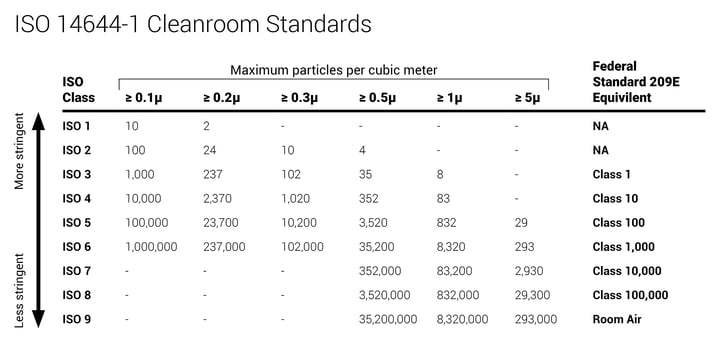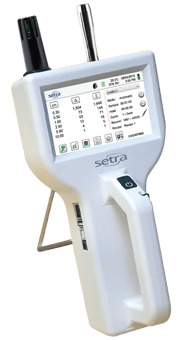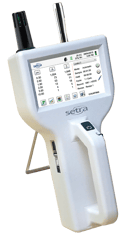
Hospitals are one of the most tightly-controlled spaces in terms of monitoring the indoor environment. ASHRAE Standard 170 is used by both The Joint Commission (TJC) and Centers for Medicare and Medicaid Services (CMS) as the fundamental reference for adequate levels of temperature, humidity, differential pressure, and air change rate in many spaces within a hospital. The ability for healthcare facilities to monitor, verify, and control these conditions is crucial not only for passing these rigorous inspections but also for protecting the health and safety of their patients and staff.
In other industries, such as pharmaceutical compounding and certain manufacturing applications, airborne particle counting is required to be continuously monitored. Particle counters and indoor air quality monitors can detect and measure contaminants such as dust, mold spores, debris, volatile organic compounds (VOCs) and even airborn bacteria in a given environment and report those findings through a building management system (BMS).
As of 2018, TJC and CMS do not have particle counting requirements for any part of the hospital, including operating rooms and patient isolation rooms. With that being said, certain healthcare spaces like hospital pharmacies are starting to adopt particle counting guidelines from those other industries. While not required now, many healthcare engineers and facility managers are anticipating a particle counting requirement in the near future and some are beginning to take proactive measures in order to stay ahead of the curve.
Cleanroom standards
Because of the nature of the work being done in cleanrooms for pharmaceutical compounding and the consequences for improper environmental monitoring, the U.S. Food and Drug Administration (FDA) has stringent guidelines for temperature, humidity, air changes, and for airborne particle counting.

The ISO 14644-1 standard used by the FDA dictates the maximum concentrations of particles per square meter in cleanrooms. ISO 14644-1 has several classifications with varying degrees of stringency on particles ranging from 0.1μm (smaller than a bacterium) to 5 μm (pollen fragments and mold spores) and is used by regulatory bodies across the world as a universal reference.
Hospital pharmacies
For many years, the U.S. Pharmacopeia Standard 797 (USP 797) has been the guiding principle for cleanliness in hospital pharmacies, especially those that create compounding sterile preparations (CSPs) for cancer treatments. However, USP 797 is under review and USP 800 is expected to become the standard bearer in this space in environments that handle hazardous materials, like chemotherapy medication.
USP 800 at a glance:
- Facilities must build out a pressurized storage closet
- Recommends that non-sterile prep areas are pressurized
- Must monitor both differential pressure and air changes per hour (ACH)
- Must have redundant HEPA filters
- Must comply over the next 18 months
- Restricted access barrier systems (RABS), also known as glove boxes, must be ISO 7 class environments rather than ISO 5 class environments in order to be in compliance.
RELATED BLOG: Are hospital pharmacies moving towards cleanroom standards?
Future standards
While TJC and CMS do not currently have particle counting standards, regulations surrounding environmental monitoring in hospitals will only continue to increase. Hospital pharmacies are already required to continuously monitor for particles and it will only be a matter of time before operating rooms and patient isolation rooms will be required to as well. Not only is the technology available and viable, but facility managers will value the peace of mind knowing their most sensitive environments are clean and safe.
Many facility managers are already being proactive. With increasing pressure to maintain cleanliness in these critical environments, facility managers and healthcare engineers are choosing to employ handheld particle counters to show that air flow is working, also allowing them to reduce air flow and conserve energy when particle counts are low. In addition, particle counters can be used around construction sites within a hospital to ensure construction debris is being contained and not being spread throughout the rest of the facility.
Want to learn more? CLICK HERE to see what kind of particle counter is most appropriate for your application.




